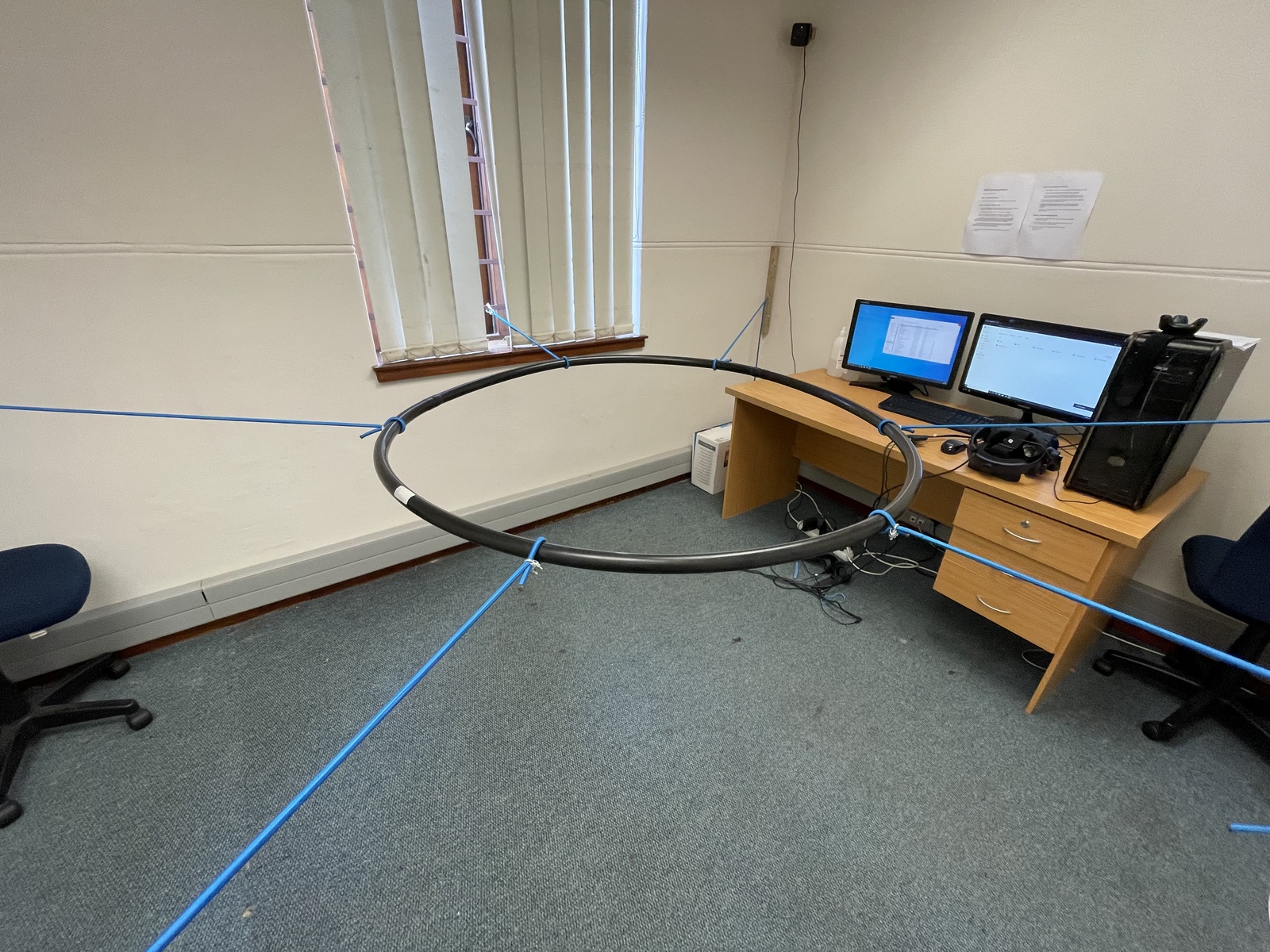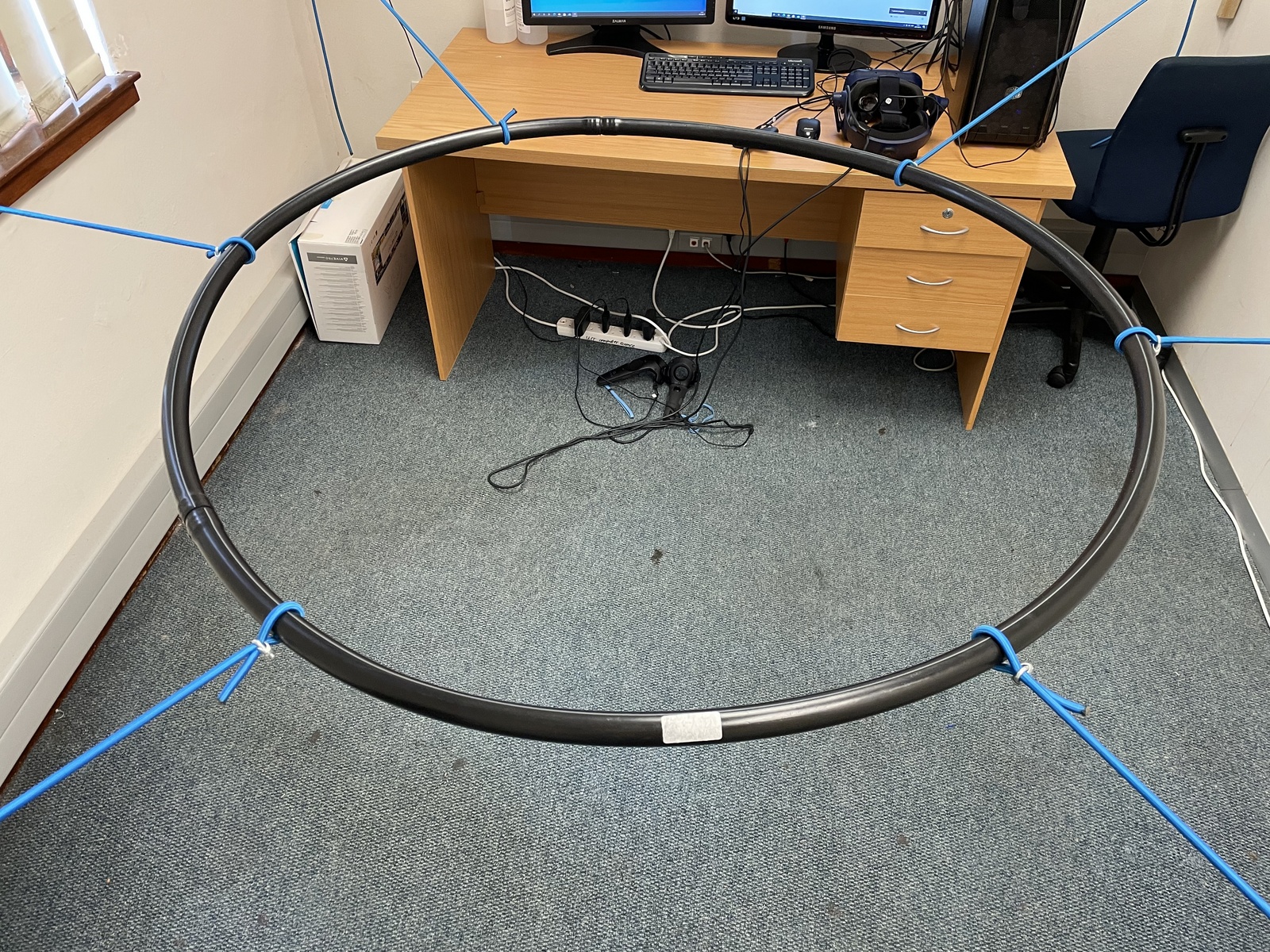Environment Design. Given the project aim of evaluating simulator sickness for different locomotion methods, the virtual environment that our participants will traverse should be designed in such a way that it will induce a base level of simulator sickness. This is done such that we can compare all three locomotion methods properly and compare levels of simulator sickness to a baseline of when the participant was feeling ordinary.
Cradle Design. The cradle is a novel locomotion method for virtual reality. The cradle is a large ring attached to walls via tether cables. The ring surrounds a user at about stomach height. To move in the virtual environment a user must walk into the ring. The speed of a user depends on the pressure applied to the ring. When a user walks into to the ring they will move in the virtual environment in the direction that the ring is being pushed. This was done through the use of ring displacement, tracked by HTC position trackers, and 3-dimensional vector sub-components. The ring provides haptic feedback as a user will feel the force of the ring against their stomach or torso when pushing against it. The ring is therefore theorized to reduce the simulator sickness.
Pictures of the Robin Hood Environment
Pictures of the Novel Cradle locomotion method


Experiment. To compare simulator sickness levels across the three walking meth- ods, human trials were run. By inviting users to play the archery game by using all three walking methods individually we were able to discover the affect each method had on simulator sickness levels. We therefore conducted a Single-Factor Repeated Measures ANOVA.
Participants. To compare simulator sickness levels across the three walking meth- ods, human trials were run. By inviting users to play the archery game by using all three walking methods individually we were able to discover the affect each method had on simulator sickness levels. We therefore conducted a Single-Factor Repeated Measures ANOVA.
Measurements. The Simulator Questionnaire requires one to rate 16 symptoms on a level from one to
four. After evaluating the questionnaire the SSQ provides an overall
score to describe the level of simulator sickness a participant expe-
riences. More so, it can describe the effects on the sub-components
that make up simulator sickness: nausea, oculumotor and disorientation.
To measure performance, shot accuracy of a user was tracked, i.e . the ratio of succesful shots a user took against total shots.
created with
Website Builder Software .